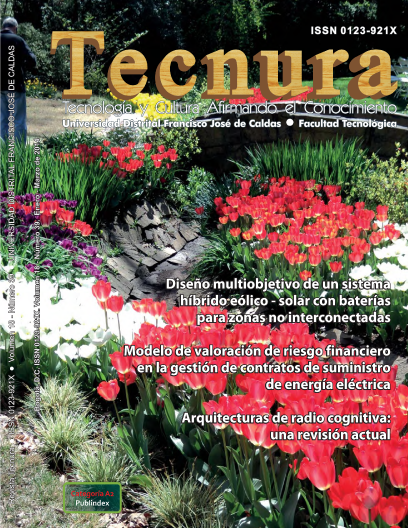DOI:
https://doi.org/10.14483/22487638.6953Publicado:
21-12-2013Número:
Vol. 18 Núm. 39 (2014): Enero - MarzoSección:
EditorialEditorial
Descargas
Cómo citar
APA
ACM
ACS
ABNT
Chicago
Harvard
IEEE
MLA
Turabian
Vancouver
Descargar cita
Editorial
The main challenge when receiving a radio signal is the fading phenomenon caused by multi-path propagation. This phenomenon; together with other difficulties such as Inter Symbol Interference (ISI), obstacles, and so on; result in variations in the link's quality. Additionally, wireless communications have to deal with limited resources in terms of bandwidth, power consumption and network administration.
As a result of multi-path propagation, there are various reflected signals that arrive at the receiver at different times. The corresponding delays result from signal reflections due to different terrain features, namely trees, vegetation, mountains, or even defined objects (i.e. people, vehicles, or buildings), which produce echoes that ultimately become ISI. Such interference is even more significant for mobile receivers since the relative distances and attenuations associated to all possible paths change over time.
In the case of a narrow-band signal, which suffers quality variations depending on channel variations in terms of frequency and peak amplitudes over time, this fading phenomenon implies a significant variation in its phase. However, when a signal has a larger bandwidth available, some parts of such a signal might experience constructive interference and raise their level, while other parts of the signal suffer destructive interference an experience serious attenuation (almost disappearing in some cases). In general, adjacent frequency components experience highly-correlated signal variations. Thus, spread spectrum techniques emerge, providing signal robustness against fading and interference; however, such techniques become a challenge for existing technologies in addition to other difficulties associated to spread spectrum signals, such as the nearzone effect and higher power consumption.
In order to overcome the aforementioned difficulties, a novel technology called OFDM (Orthogonal Frequency Division Multiplexing) was proposed. OFDM is basically a broad-band modulation scheme capable of solving most of the problems associated to multi-path fading by transmitting many narrow-band signals at the same time, namely the signals are in superposition within a wide range of frequencies. This increase in the number of transmission channels (parallel channels) reduces the individual data rate of single carriers and augments the period of a single symbol. As a result, the delay associated to the reflected waves is easily overtaken by the symbol's duration.
This concept emerged from a technique called FDM (Frequency Division Multiplexing), which was published in the mid-sixties. The main principle of such a technique was to use parallel data sequences together with overlapped sub-channels so as to avoid using fast equalizers and also to reject both the impulse noise and multi-path distortion; also making a more efficient use of the available bandwidth.
In the eighties, OFDM was applied to high-speed modems (intended for telephonic networks), to digital mobile communications, and also to high density recording with trellis coding. In the nineties, OFDM was exploited for the deployment of broad-band data communications over mobile FM radio channels, it was also used in implementations like High-bit-rate Digital Subscriber Lines (1.6Mbps HDSL), asymmetric lines (1.536Mbps ADSL), and Very High-bit-rate lines (100Mbps VHDSL), as well as in digital audio broadcast (DAB) and TV (HDTV).
In OFDM, each carrier is orthogonal to the other carriers, which makes this technique one of the most effective (optimal) multi-carrier transmission schemes to date. The most significant difference between FDM and OFDM is that the first scheme assigns a single channel to each user, whereas the latter (OFDM) assigns all channels in a band to one user. In order to have a considerable amount of sub-channels, the array of sinegenerators and coherent demodulators required to implement such a parallel system can be costly and complex. Hence the corresponding receiver needs to accurately estimate the phase of demodulated carriers and also the sampling times so as to keep an acceptable level of interference between sub-channels.
M.Sc. Ing. César Augusto Hernández Suárez
Teacher of the Faculty of Technological Studies
Universidad Distrital Francisco José de Caldas
Licencia
Esta licencia permite a otros remezclar, adaptar y desarrollar su trabajo incluso con fines comerciales, siempre que le den crédito y concedan licencias para sus nuevas creaciones bajo los mismos términos. Esta licencia a menudo se compara con las licencias de software libre y de código abierto “copyleft”. Todos los trabajos nuevos basados en el tuyo tendrán la misma licencia, por lo que cualquier derivado también permitirá el uso comercial. Esta es la licencia utilizada por Wikipedia y se recomienda para materiales que se beneficiarían al incorporar contenido de Wikipedia y proyectos con licencias similares.


